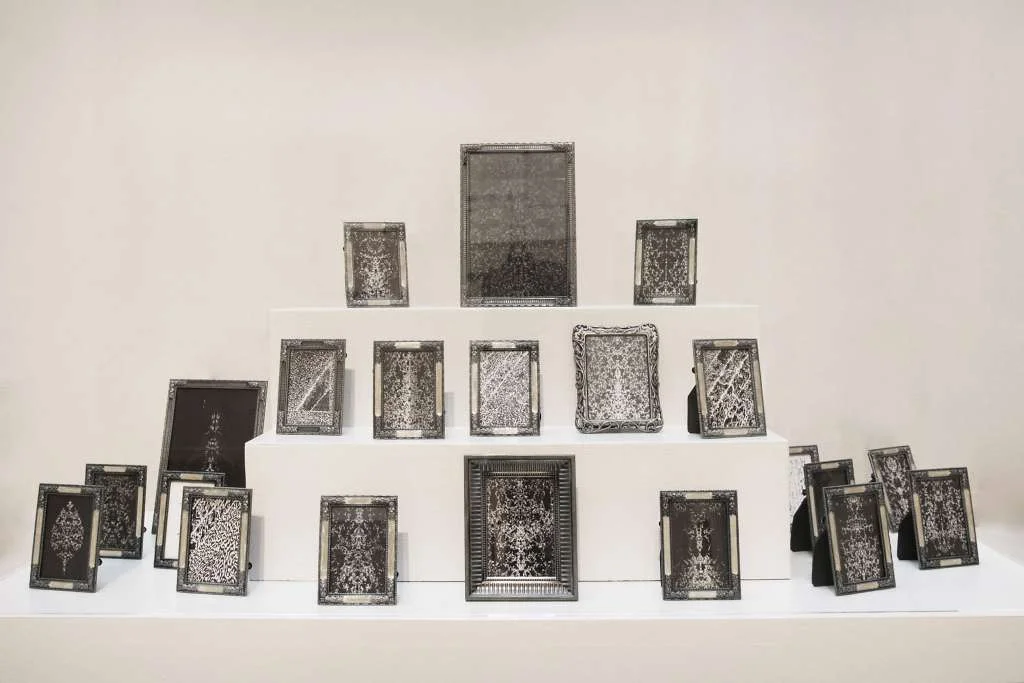BY CHARLES DESMARAIS
Two strong Bruce Conner exhibitions that might be missed in the shadow of the artist’s extraordinary retrospective at San Francisco Museum of Modern Art (“It’s All True,” through Jan. 22) are being simultaneously presented at downtown galleries. Both shows are small, particularly in comparison to the massive SFMOMA affair, and both focus on aspects of Conner’s extensive graphic work.
“Total Environment, Total Consciousness,” at the Anglim Gilbert Gallery, is the broader selection. A good range of the artist’s scrappy photographs from the late 1970s of punk clubs are here, as are a few collage works of interest. A small, untitled drawing from 1967 is one of the few works in color: an obsessively penned mandala form that almost magnetically draws us into meditative focus.
I was particularly struck by the extremes of scale between tiny inkblot “drawings” in store-bought frames and tapestries up to 10 feet wide. The framed inkblots are crowded together like portraits of family on a boudoir side table.
Four of the five tapestry designs the artist made at Oakland’s Magnolia Editions are included. They are odd objects (you can see the fifth in the SFMOMA show), enlarged many times from intricate collages Conner made out of cut-up etchings. Figures are returned to life-size. Small works on paper become massive cotton-wool wall hangings, transformed by Magnolia’s technicians working on digital Jacquard machines.
Crown Point Press — besides Magnolia, another of the Bay Area’s great printmaking studios — is showing a selection from 26 works printed with Bruce Conner in 1971-73. Engravings — large-edition prints cut from old books — were painstakingly trimmed and assembled into one-of-a-kind works. These were then reproduced as etchings, becoming multiples again.
Three portfolios were produced. They tweaked the art world’s idea of authorship and originality, both through the technique he used, and by ascribing the work to an artist-actor friend: He called the series “Dennis Hopper One Man Show.”
